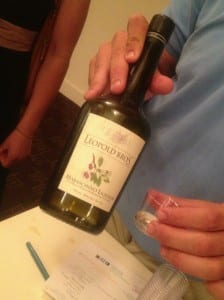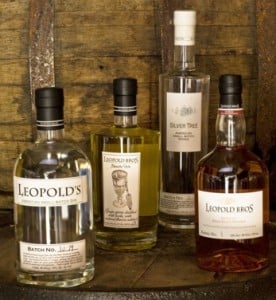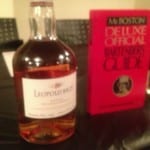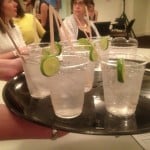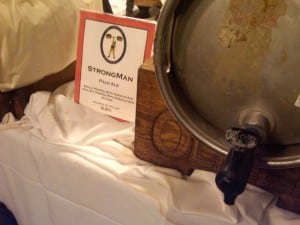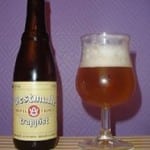Posts Tagged ‘terroir’
Get Real..Ale That Is!
So what is “Real Ale” and what is a Real Ale Festival?
Please Note: I went to the Chesapeake Real Ale Fest 2011 which you can read about below, but I also want to mention that I’m planning a DC Based Real Ale Fest some time in late 2011. My next local Real Ale Festival is in Bel Air, MD, in early September – you can purchase tickets at: Real Ale Festival
My Quest for “Real Ale”?
This was my mission on Saturday, May 14th, 2011 as I visited the Chesapeake Real Ale Fest 2011 at the Pratt Street Ale House in Baltimore, MD. To make things even more interesting, my Verizon DSL, phone and FAX were under repair for the 3rd day – seems that 3 visits from Verizon Repair Techs couldn’t resolve the problem – the concept that the phone line had actually been cut was confirmed by Tech 1, but seemed to baffle Tech 2..until he went up on the Poll and confirmed that..OK, back to Real Ale..
My curiosity with Real Ale has alot to do with my background in wine – in wine, the concept of “terroir” or the “placeness” of wine (some would call it “micro-climate”, but that’s over-simplified..) is an integral factor in the taste and composition of wine. Wine is alive and represents all the factors involved with grapes and wine-making – including yeast. Real Ale is very much about the yeast – keeping them alive and allowing them to flourish and remain alive and change the flavors in the beer. But first, let’s clear up a few terms and concepts..
What Is Real Ale?
From Wikipedia: Real ale is the name coined by the Campaign for Real Ale (CAMRA) in 1973 for a type of beer defined as “beer brewed from traditional ingredients, matured by secondary fermentation in the container from which it is dispensed, and served without the use of extraneous carbon dioxide“.
Real Ale = Cask Ale?
YES -Right from Wikipedia: Cask ale or cask-conditioned beer is the term for unfiltered and unpasteurised beer which is conditioned (including secondary fermentation) and served from a cask without additional nitrogen or carbon dioxide pressure. Cask ale may also be referred to as real ale, a term coined by the Campaign for Real Ale, often now extended to cover bottle-conditioned beer as well.
Is “Bottled-Conditioned” Beer the Same as Real Ale?
Yes – Bottled conditioned ale has living yeast that will generally consume and alter the aging compounds in a beer, making it evolve instead of degenerate with age. Thus, some bottled conditioned ales could be of over ten years of age, evolving in flavor during that time.
If My Ale Isn’t Real, Is it Fake? This is very similar to the argument about wines that having no terroir or character because they’ve been over-manipulated by man – I don’t believe that’s true, because a good brewer just like a good winemaker can take good ingredients and make them taste excellent. Making wine or beer is a talent that can be learned and is not wholly based on the raw ingredients – then again, if the grapes had a difficult growing season or the Hops are used incorrectly, that will have an outcome on the final product. The good news is that beer producers have choices on how their final product tastes – West Coast brewers LOVE hops, while other brewers ususally use hops more sparingly. And then there are breweries that use local hops, possibly even organic hops. The same goes with grains – brewers can choose many different grains like wheat and barley, and where they are produced. Ultimately, beer is more about the brewer’s style, while wine is a split between the quality of the grape harvest and the winemaker. Ultimately, the consume must decide.
Me? Well, I drink Real Ales when possible because I like the often sour notes or unusual flavor conditions of the beer for a truly unique drinking experience! Do I think Real Ale will someday surpass those of regular beers? No – and why should they – to enjoy something unique, special and unusual is all about the personal experience, and no one wants those to be copied..just like individuality, craft beer should be enjoyed simply for the experience occasionally, but most of the time it really just quenches my thirst – Cheers!
Charlie “I Drink on the Job” Adler
A Bit On Bordeaux..
Who says wine tastings are boring? On Tuesday, April 20th I attended a wine tasting sponsored by MacArthur’s Beverages at the Matisse Restaurant in Washington, D.C. with Jeffrey Davies, a well-known Bordeaux negociant, importer, and wine maker who actually is originally from the U.S. The event was to showcase the wines of Stephane Derenoncourt who unfortunately couldn’t make it because of the Icelandic volcano that erupted ash all over Europe and prevented him from flying into DC. This video is brief and covers some of the differences in how vines are chosen for the Right Bank vs. the Left Bank of Bordeaux. It was quite an educational experience for me as the tasting notes were extensive on the printed tasting sheet and included terms I was vaguely familiar with including microbullage and levurage
Twelve wines were tasted from a Gree Laroque 2005 priced at $20 to La Mondotte 2001 which will set you back $200 or so a bottle! There was also a special guest appearance by a winery that Monsieur Derenoncourt consults with in Virginia called Boxwood Winery – both the Boxwood Topiary Red 2007 and the Estate Red 2007 both at about $25/bottle showed very well against the French Bordeauxs – Rachel Martin, one of the owners spoke about making wine in Virginia at the event.

Oh, and for fun, here’s the video of Jeffrey on Wine Library TV:
Debunking Terroir

I’ve heard so much about terroir in the wine press/blogging/twitter the last few years, that I’m past overwhelmed by all the statements and now into my denial phase. If you’re not familiar with “terroir”, it’s all about the “placeness” of a wine: the what, where, and how of the type of vine chosen, the varietal, the roots, the soil, the micro-climate, the wine maker, the regionality and of course all the factors that go into making the wine. For example, the “terroirists” or proponents of the idea that wine (and cheese, and beer, and pretty much anything you consume) should represent the unique characteristics of its region, are generally against much human manipulation, ie. chemical fertilizers, fungicides, herbicides, and too much use of new oak (this is a very short list, there are many more!). Their thinking is that we should taste nature’s gift the way nature intended it to be–use natural yeast, don’t filter or fine, and let the grapes ferment and express themselves the way they were meant to..enough, enough!
So what’s my issue with the concept of terroir? Does my skepticism towards the idea that you can (or can not) taste the soil in the final expression of the wine give me the right to throw the whole idea of nature’s expression out the window? Well, that’s not my point. I actually believe that better wine makers know and understand the locality they live in and they should use the least aggressive means of getting the vine to ripen grapes and express the full range of flavors. I believe that terroir, like character, is personal to each wine consumer. We each HAVE our own terroir (where you were born, your family history, the way you were brought up, etc.) and VIEW terroir differently – you say tomato, I say tomaato, well..you get the picture. We all express our own terroir, taste things in our own way, and we should each express our own opinions. The terroirists like many idealists are just too fanatical for my tastes, so to speak. They often condemn “manufactured wines” that have no soul, no individuality, and don’t represent a unique micro-climate. Fine–but just like the average American consumer, I want to enjoy a wine and I want it to taste good – what if 2 Buck Chuck tastes better to my palate than a $45 bottle of Burgundy, does that make me insincere? Isn’t there a place for mass market wines just like there’s a place for chain stores, or other commercially made products? Sure, I prefer handmade chocolates, but I’m not offended by the highly industrialized manufacture of Hershey Kisses, hey they taste good too!
The French say “to each his own” – so be it with wine. You only buy grass-fed organic beef from the farmer’s market, I like Prime-Aged corn-finished meat, but my mother swears by the tenderloin at Costco. Same with wine, each of us has different needs and goals in mind, so that should sincerely respected. I’d rather drink a local Virginia or Maryland wine (non-organic – it’s not possible at this point to produce organic wines in our area primarily due to humidity and rainfall during harvest issues) than an organic wine from say Chile. Both wines are great, but I can see the face of the Virginia winemaker at a local wine tasting room or at local tastings. I like the idea to keep money in the community when possible – that’s my feel good issue. For me, my sense of terroir is connected with the people I help in life – economically, spiritually, and in whatever way I can be of assistance. I don’t give money to international charities because I try to assist the homeless that live within a mile of a my home. My terroir is right here..
Charlie “I Drink on the Job” Adler
The Hard Truth About Cider
When I first began putting this article together, I really wanted to understand cider – no, not the stuff you drank as a kid, and not really the “hard cider” concoction mass-marketed in the U.S. for people who want alcohol but have a sweet tooth – I’m talking about the “artisanal” ciders produced in Brittany, France, parts of Britain and now the U.S. Farnum Hill Ciders seemed like a good place to start and the fact that they were willing to “donate” some samples to my tasting cause (tax man-I drank them as a “charity” to my spirits!) certainly made the journey to understanding worth it. I tasted (more like consumed!) the Kingston Black Reserve and the Extra Dry. Yes, both of them had aromatics reminiscent of apples, but just as in wine, there is so much more to the nose. Well-made artisanal products have intense aromas and I noticed quite a bit of spice – or was that the fact that I associate apples with cinnamon and clove? Ahh, the brain, such a wonderful organ, it adds immense complexity to everything, especially when it comes to olfactory powers! What screamed out of the glass (mug?) of the Kingston Black was a yeastiness reminiscent of Belgian Lambics. The finish was dry as a bone on both products and you could see right through each glass of cider – they are obviously filtered. Conclusion: I need to learn more about cider before I evaluate them, so I contacted Farnum Hill’s Corrie Martin (Director of Marketing and Strategy).
Cider: Closer to Wine or Beer?
My conclusion from the interview is that “cider” is a great product and has a significant “potential” audience, the problem is getting the message to them! The dilemma is whether cider is more like beer or wine when it comes to marketing the product? Farnum Hill uses the same yeast strain that is used to make Champagne – so check-mark on the the wine side. Corrie mentioned that the market for the product and the retail shelf location tends to be near Belgian beers in the refrigerated section – two check-marks for beer. Much of the marketing is geared towards Champagne lovers – another check-mark for wine. Apples have “terroir” like wine grapes do, but apples are grown generally in cooler regions where beer is consumed as in Britain and northern France – check-marks on both side. When it comes to pairing, wine, beer and cider all have their pluses and minuses. In other words, cider has some image hurdles to jump before it can reach its intended audience.
So after the interview, I have some thoughts about cider and it’s place in American consuming culture. As Corrie mentioned: “cider is a farm drink”, it’s an agricultural product, a product of the earth. I think this is an important point: wine is portrayed to the American consumer as a “cultural” product. Yes, vines are grown in the fields and grapes ripen based on sun, heat and other elements, but there’s a bit of the “liquid poetry” and the expression of the earth story line. I don’t picture wine makers in overalls, even though that’s probably how they do their job, I picture them in a tasting room, evaluating. If you’ve ever been to France at wine trade tastings, it’s coat and tie, and frankly it’s a bit stuffy. Add the English culture to the wine equation with connoisseurs, sommeliers, and Clarets and wine is part of the aristocratic tradition. Even the British wine critics are bery, bery British, I mean watch your P’s and Q’s, thank you very much!
Beer on the other hand, is a more industrial product, and even on the “micro”/craft level, I picture engineers in jeans playing with test tubes, measuring the hops and talking about ABV. Even high-end beers are enjoyed by jean-clad, t-shirt wearing beer geeks who often produce the product in their cellars at home. You never hear the term “craft” relating to wine, it’s “craft beer” – you can make this stuff, buy the right ingredients, get your yeasts, a few instruments and heck, you can make the good stuff! The biggest differentiation is when you attend a premium wine festival vs. a beer festival. Wine is more dressed-up, beer is more casual in dress as well as attitude. You “have” a beer, never wine. Wine has plenty of accessories: corkscrews, glassware, stoppers, aerators, preservation systems and the list goes on; beer needs a church key and a glass, you’re good to go!
So where does cider fit – and is that “hard cider”? My conclusion is that cider’s strength’s are closer to beer’s. Yes, apples vary from year to year like the quality of grapes, but cider is not a product that needs aging, and it preserves better refrigerated, so it most likely will be found in your retail outlet either in the domestic beer section or near the Belgian beers. Most cider will probably be marketed as dry or off-dry (that’s another consideration – how many people “perceive” cider to be sweet – that’s a marketing hurdle all by itself!) and possibly even looks similar to Champagne in color and bubble, but it just drinks more like beer! The alcohol level is in the 6-8% range (generally, very generally!) so that makes it a consumable closer to beer for practical purposes – you can have a mug of cider/beer of 12 to 16 oz. and still walk-away – the equivalent consumption of wine might take you over the legal limit, again, another consideration.
So now I add the weird question: when would I drink cider? Does it replace some of my wine consumption, or more of my beer drinking? I drink wine with food – period. Beer to me is an excellent stand-alone beverage, something I often drink when smoking meats, in fact, I use it as a cooking timer – ribs are ready after 2 or 3 beers, brisket the same, but add a 1-hour nap. I’m basing the beer equation on an approximate 12 oz. beer, many of the ciders are sold in 750 ml’s which is just over 25 oz..oh, that’s 2 beers, right! I often add beer and apple cider vinegar when I braise my BBQ to finish it for an extra hour or two – hey, again, cider is perfect, it saves me one step! Oh, and I love to make wine vinegar with any leftover wine, now I can make artisanal cider vinegar. Another double benefit for me. Cider will take away some of my beer consumption, but virtually none of my wine consumption. I drink beer maybe once a week, but wine literally every day, usually lunch and dinner, so a few bottles of cider a month suffice for my personal consumption. Another plus, is it doesn’t effect my Scotch/Rum/Bourbon consumption – a true relief to me!
Final thoughts
Image is everything when it comes to marketing a product, especially when you are trying to reach the “up market” demographics that cider is reaching. The bottle shape, size, closure (cork or cap?), the location in the store, the design and text of the label will all have an enormous effect on the perception of cider. The trick is to be associated with a competitive product that has the high-end image the producer is seeking. Champagne has this image as well as wine, but so does craft beer. If I pour cider in a fancy thin flute, you might sip it differently than you would if I poured it in a 16 oz. pint glass, in fact, I guarantee you will treat it differently. Still, Belgian beers have been relatively successful at marketing themself, and the consumer will drink Belgians in pints or in special glasses, I’m not sure if it makes significant difference in the products perception? Personally, I like the idea of a group of casually dressed people in a Pub with old-fashioned blue-collar ceramic mugs drinking frothy ciders and singing old English songs of a time gone by. I actually like the blue-collar image of cider – it’s sort of a nostalgia thing, kind of like the return of the Hamburger joint in the U.S. – yes, the hamburger’s recipe has been updated with better cheeses, Kobe beef, homemade ketchup and fries fried in olive oil, but it still brings back memories of a simpler more casual time. When I drink my Champagne, I want my Champagne, but when I drink my cider, I want to just be cave-man me!
Cheers!
Charlie “I Drink on the Job” Adler
What Wine Goes with PB&J?

They don’t stress much about drinking New Zealand wines in France – there is plenty of great wine in a French person’s backyard. So why is it Americans stress out so much about choosing the right wine with say a French dish like Ratatouille when a French wine from say the Languedoc would work fine? What is it as Americans that we expect from a wine and food pairing – a result of perfection where we can tell all of our compatriots how we successfully completed a veritably impossible task, matching the flavors of a dish with an unknown wine? Maybe we should study up on the world of wine, learn more about the intricacies of Gruner Veltliner from Austria and how it’s put this varietal on the map, or maybe we should read a few books on wine and food pairing to avoid that embarassing faux pas when we mistakenly ordered a Brut Champagne with our P,B &J when it should have been at least Extra-Dry or even sweeter? Oh, why can’t this be so much easier, why can’t they just put little labels on food telling us what goes and doesn’t go, why do we have to use our feeble brains??
That’s because the French eat French food everyday, and guess what wine they drink with it? French – their wine goes great with their dishes, eat up! This is all part of that horrifically difficult to explain “terroir”. Most of what you read and hear about terroir in wine circles relates to the location the vines were grown, but you rarely hear about the producer side of the equation, what I like to call “Pride in Ownership”. The tradition of drinking and eating local products created the pride in ownership that is part of terroir and what makes localities compete to make the best products. Just like a New Yorker will bitch to no end about how bad the bagels are outside of New York (must be the water?), a Frenchman will claim that their regions chevre (goat cheese) is better than even the neighboring villages. That cheese comes from a local goat, which was fed on local grasses and vegetation and its manure was used to fertilize the vines, or possibly it ate the weeds between the vines. The French drink French wine most of the time as do the Italians and the Spanish not only because it’s cheaper for them and readily available, but they connect emotionally with their own produced wine and cuisine. Being fussy about wine doesn’t make sense because it’s something consumed with everyday meals, normally lunch and dinner. You eat local and you drink local because you know what tastes best.
Americans are still developing our pride in our own products and sometimes it embarasses us – once I was at a French Burgundy wine tasting early in my career at TasteDC in Washington, D.C. and I mentioned half-jokingly that one of the wines might taste great with a good cheeseburger and french fries – I got a look like I had just committed a sacrilege! Wine was meant to be consumed with “real” food, not casual foods that were not worthy of their lofty reputations. I had offended the American luxury ethic – thou shalt not enjoy any luxury without tight-lipped apprehension – how dare I, Charlie Adler, a non-wine expert at the time, attempt to create an unofficial food and wine pairing! Call in an expert, food and wine pairing is rocket science, you need a degree in oenology even before you should be allowed to remove the cork!
OK, this seems a bit facetious, but if you had been consuming wine in the 90’s, you met quite a few people with sour puss demeanors. Even the idea that someone would pair wine with something as mundane as a sandwich, much less a PB&J was considered to be preposterous and very uncouth. Times have changed, wine is prevalent and available everywhere from supermarket and in some cases to the corner 7/11. You don’t need a degree to enjoy wine with food, just do what the French do – eat and drink local. So now that I’m serving Virginia ham with some local cheeses, I’ll choose a wine that..wait, isn’t ham salty and that will have a chemical effect on tannin? Well then, I better not choose a wine that’s too tannic, it will..
Charlie “I Drink On the Job” Adler
What Wine Goes with Chocolate?

Wander's Gooey Chocolate
I had a great Chocolate Making 101 class at Wander’s Chocolates in Manassas, Virginia this past Saturday. Lot’s of gooey chocolate and plenty of samples of ganache and a variety of top quality chocolates like Valhrona and El Rey. Chocolate is very much like wine – the location that the cacao pods are grown has a very noticeable effect on the final flavor and intensity of the final chocolate. Many processes occur to make your final chocolate such as conching, but much of the flavor as in red wine is from the concentration of flavor compounds in the pod – interestingly enough, these compounds are the same compounds that make both red wine and dark chocolate healthy for you. The reason milk chocolate and white chocolate aren’t quite as healthy for you is because they have other additives other than cacao.
So what wine goes with chocolate? The answer is a bit controversial because many wine tasters disagree what is a good pairing. I have always heard from wine pros that dessert wines and desserts go together, but personally, I think this is mostly wrong – for me, if I put a sweet dessert in my mouth and sip a sweet dessert wine, they really cancel each other out – I prefer dessert wines with salty foods, fatty foods (foie gras and Sauternes comes to mind) or just by themself.
Chocolate on the other hand has an earthy component (have you ever heard a wine described as having cocoa or mocha components?) that can pair well with earthy wines – and most earthy wines are red. The traditional pairing for chocolate is Port because it contains two excellent pairing components: it’s sweet to reduce th sweetness of the chocolate and its red with usually a bit of earth Portuguese red varietals that counterbalance chocolates cocoa components. In some ways the compounds from red wine skins match cacao flavors, and this makes the chocolate much less earthy. I’ve had many wines with chocolate, and I find that less complex reds like basic Italian Sangiovese (like Chianti) and Spanish Tempranillo often go really well. As in most food and wine pairing, simpler less concentrated wines with decent acidities tend to go better with food, while big trophy wines tend to be better without food – they show best on their own.
Originally, Montezuma allegedly drank 50 cups or so of cacao a day in order to keep his harem happy and to multiply. But the original cacao had no sugar, but was in fact mixed vigorously (frothed) with herbs, hot peppers and sometimes even mushed up corn. Chocolate was a savory beverage, and not until the Spanish brought it back to their country and added sugar to it, did it become closer to the “hot chocolate” that we know today – candy bar chocolate came much later. The point here is that chocolate is actually a savory item and that a nice red wine, even a Merlot can often go well. As I always say, food and wine pairing is not a science: taste, experiment and taste a variety of food and wine pairings until you find what you like. The good news too is that no one ever dies from a bad food and wine pairing, all you get is slightly less pleasurable or bad experience – but the fun is in the learning – cheers!
Charlie “I Drink On the Job” Adler
The Terror of Terroir

I’m working on the chapter on “Terroir” for my upcoming book “I Drink On the Job” and I’m trying to figure out a simple way to explain to people that basically “terroir” means..well, uhh, sort of…poop! Very few people I know love the smell of..well, crap, but in essence that what terroir is – it’s the stink of the earth..well sort of, it doesn’t necessarily have to stink, I mean when I think of the terroir of a runny washed rind cheese, I think of…there it is again, barnyard! So how do I try to convey in language the natural, earthiness of terroir without getting stinky about it?
So here’s my idea: rather than try to connect terroir with “earthiness”, I’m going to write about “placeness” or “somewhereness” – Terroir is the character of a place, the effects of taking two identical living things and bringing them up in a totally different environment. If I plant the same Chardonnay vine, identical in every way right down to the DNA and I plant them in totally different “places” then I will come up with two totally different wines. An analogy I use in the book is the story of two identical twins. Let’s say I separated soon after birth two identical twin baby girls and brought them up in two different places with completely different parents, say one was brought up in Los Angeles by a wealthy family, and one was brought up in Tokyo, Japan by a lower class family. Twenty years go by, and they happen to meet each other..would they be the same? I mean, would they have the same personality and character, would you mistake the two of them for the same person after being around them for a few minutes?
This is very difficult to convey in simple language, because I think terroir is really a concept less scientific and way more philosophical, maybe akin to explaining “biodynamic” to someone who has never heard of it. I’ll put some real effort into explaining the “placeness” concept, I just hope that people will read my book and realize that terroir is not only vague, but it is also difficult to detect in a wine.
And maybe one person’s terroir is another’s terror..
Charlie “I Drink On the Job” Adler

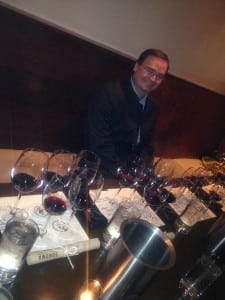
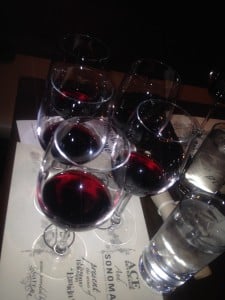
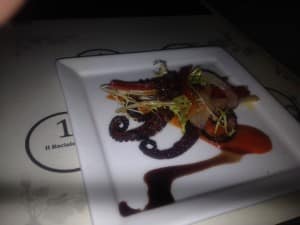
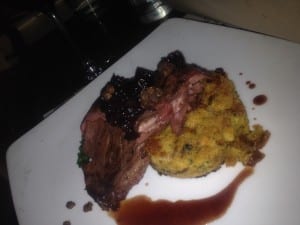
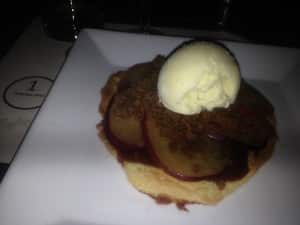
 Little known fact: the grape varietal “Barbera” was once a throw-away jug wine kind of grape that was never taken very seriously in the Piedmont Region of Italy where Barolo and Barbaresco are the King and Queen of wines respectively. Guiseppe Bologna, the founder of Braida winery, was the first back in the 1980’s to produce prodigious wines by planting Barbera vines on his family’s land and using new French oak as his aging barriques.
Little known fact: the grape varietal “Barbera” was once a throw-away jug wine kind of grape that was never taken very seriously in the Piedmont Region of Italy where Barolo and Barbaresco are the King and Queen of wines respectively. Guiseppe Bologna, the founder of Braida winery, was the first back in the 1980’s to produce prodigious wines by planting Barbera vines on his family’s land and using new French oak as his aging barriques.